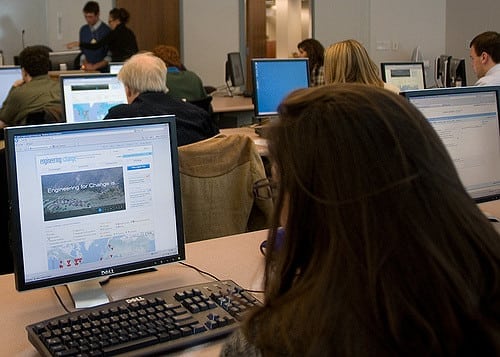A Landscape Analysis of the Field of Engineering and Human Rights
The University of Dayton collaborated with Engineering for Change (E4C) on a landscape analysis of the intersection between human rights and engineering (HRiE) with the goal of understanding current trends and gaps in research, knowledge, and partnerships; existing challenges/barriers to vocational pathways, and potential opportunities for the university and undergraduate curriculum. Twelve interviews across industry, academia, community activism, and nonprofit organizations involving engineering and/or human rights and 50+ articles contributed insights in three main areas: curriculum, career pursuits, and research.
Curriculum: Education in human rights is itself a fundamental human right and responsibility: the Universal Declaration of Human Rights exhorts “every individual and every organ of society” to “strive by teaching and education to promote respect for these rights and freedoms.” Ergo, articles and interviews emphasize that academic institutions must strive to incorporate education in, at a minimum, the basics of international human rights law, norms, principles, and actors and how to apply these in engineering scenarios locally, nationally, and globally. Other university programs have found mixed-discipline collaborative courses and community-engaged learning to be successful in demonstrating applicable practices of HRiE.
Career: Being well-versed and broad-minded in matters outside of engineering is a highly-valued trait in employees regardless of whether the job specifically applies to human rights. Students can also apply these skill sets and mindsets specifically to human rights in engineering jobs by leading projects in an ethical manner that is mindful of international labor laws, regional rights treaties, sustainable development goals, and solutions that respect, protect, and fulfill the dignity and rights of all people, particularly those who are most marginalized or vulnerable.
Research: Research in HRiE specifically is nascent and often comes out of academic institutions invested in developing their related programs and pedagogical strategies. It is also conducted by organizations investigating how to promote ethical business, diversify engineering skills and experiences, and utilize new technology in rights-conscious ways.
After conducting the landscape analysis, recommendations for universities’ human rights in engineering programs include showing students examples of applying human rights frameworks to the engineering design process, allowing the students to practice that application themselves, and introducing successful and inspirational role models in the field.

Engineers trained in human rights help balance and redistribute power to vulnerable populations. Attribution:Vecteezy.com
